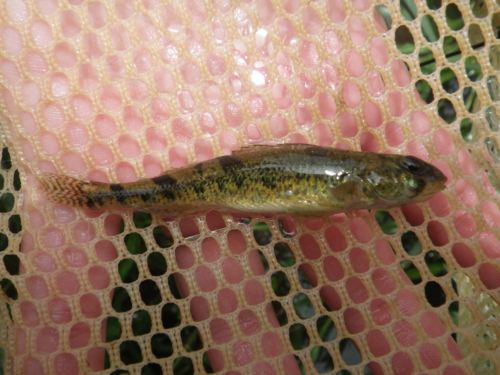Image courtesy of US Fish and Wildlife Service
Thomas Near, a professor in Yale’s Department of Ecology and Evolutionary Biology, plucked another three-inch-long fish preserved in ethanol. Seated at his home-desk-turned-lab, he counted the number of fin rays and lateral line scales from the presumed Snail Darter (Percina tanasi). Later, genetic testing of DNA sequences taken from its fin would confirm what he suspected: this “endangered” Snail Darter was phylogenetically and genetically identical to the previously described Stargazing Darter.
Beginning in the early 1930s, dams were built along the Tennessee River to generate electricity and control floods. This effort, spearheaded by the Tennessee Valley Authority (TVA), was halted during World War II. However, after the war, the TVA resumed its development using the principle of eminent domain, the power of the government to take private property for public good. “People who lived in the little Tennessee River Valley were trying for a long time to stop the dam. It was a grassroots effort, like David versus Goliath,” Near said.
When Near’s mentor David Etnier, a conservationist and ichthyologist, took a swim in the Tennessee River Valley, he emerged excitedly. “I may have just found a fish that will save your farm,” Etnier exclaimed to the people.
The fish in question was the Snail Darter, gravel brown with translucent fins and the size of a thin baby carrot. At the time, species were described based on physical distinctiveness: the number of fin rays, scale placement, the width of saddles of pigment on its back. Genetic sequencing and phylogeny, while widely used today, were mostly unheard of at the time. The Snail Darter was believed to be isolated to the region of the Tennessee River Valley where the Tellico dam was slated to be built. Per the United States Endangered Species Act (ESA) of 1973, any action that would endanger an endangered species would have to be halted. The Supreme Court ruled in favor of the Snail Darter. The fish was a savior. Development stopped, and a river was (temporarily) saved.
The Stargazing Darter (Percina uranidea) was described in 1887 in the Ozarks, a mountain range six hundred miles north of the Tennessee River Valley. Near’s lab sequenced the mitochondrial DNA of Snail Darter samples and compared them to the genes of known darters. “We actually found individuals of Snail Darter and Stargazing Darter that had the exact same mitochondrial genotype, identical,” Near said. He had never seen this phenomenon before. The Snail Darter was really a separate population of Stargazing Darters. The two were synonymous.
Near was hesitant about publishing results. In 1979, Congress attached a rider to a spending bill signed by President Jimmy Carter that exempted the Tellico dam project from the ESA, allowing development to resume. However, Near knew the information would damage the reputation of Etnier and the iconic Snail Darter. He went back and forth for a while, before coming to a conclusion. “It’s a conservation win if we truth-tell the story of the Snail Darter,” Near said. “It gives us the political capital or ‘street cred’ to make more policy changes.” After validating with colleagues and expanding the dataset to include genome-scale DNA sequence data, he published in Current Biology.
The pushback was brutal, says Near. Conservationists and ecologists flamed him on X.com for potentially providing support to a far-right, anti-conservation perspective. From the way he sees it, he has ultimately abided by scientific principles.
It’s impossible to know how many other species may be in the same position as the Snail darter and the Stargazing darter, but Near believes such taxonomic mistakes are possible. However, with new methods like the ones he employed, it’s possible to figure it out. “We are in a renaissance of biodiversity,” Near said. “Genomics is opening doors, and we will discover many more species in need of protection.”

